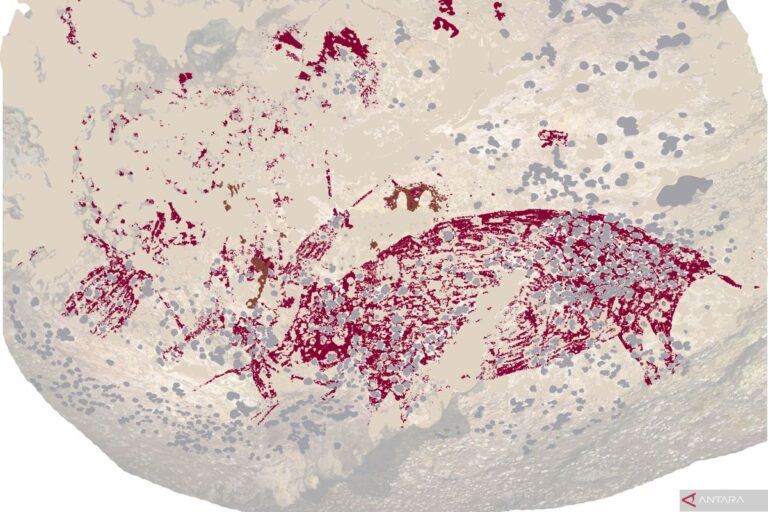Jakarta (ANTARA) – Researchers from the National Research and Innovation Agency (BRIN) and Australia’s Griffith and Southern Cross Universities recently discovered Indonesia’s oldest cave paintings in a cave in Maros-Pangkep, South Sulawesi.
The research team proved that the paintings, which show humanoid figures interacting with anoas (Bubalus) and wild boars, are at least 51,200 years old.
“This is the first rock painting discovered in Indonesia that is older than 50,000 years,” Adhi Agus Oktaviana, co-chair of the BRIN research team, said Thursday.
These paintings may have been an attempt to communicate the dangers of interacting with anoas and the need to hunt them in groups, he said, adding that they may also have spiritual significance.
This discovery therefore has important implications for the history of early Indonesian art and, much more generally, for human understanding of the origins of the arts.
“In principle, more than 51,200 years ago, humans were already able to communicate by telling stories. However, since words are not preserved like fossils, only pictorial art remains,” said the BRIN researcher.
“The discovery in Sulawesi is the first evidence (of cave painting) in the archaeological sense,” he added.
Oktaviana stressed the need to study cave paintings to improve knowledge of early human civilization and migrations. This method is also relatively less expensive than conducting excavations at a targeted site.
Meanwhile, the LA-U series laser ablation facility operated by Griffith University was used to detect the calcium carbonate layer in the cave paintings for precise dating, he said.
The results were also published in the scientific journal Nature, the BRIN researcher said.
Responding to the findings, BRIN Chairwoman Laksana Tri Handoko said they showed the determination of Indonesian archaeologists to study and learn more about the ancestors of the Indonesian nation.
“Indonesia has an abundance of objects that are not just artifacts but also authentic evidence of the abundance of our culture and civilization,” Handoko added.
Related News: President Jokowi praises beauty of Batu Cermin Cave in Labuan Bajo
Related News: Optimizing the tourism potential of Papua’s Japanese Cave
Related News: The Charm of Istana Ular Cave


